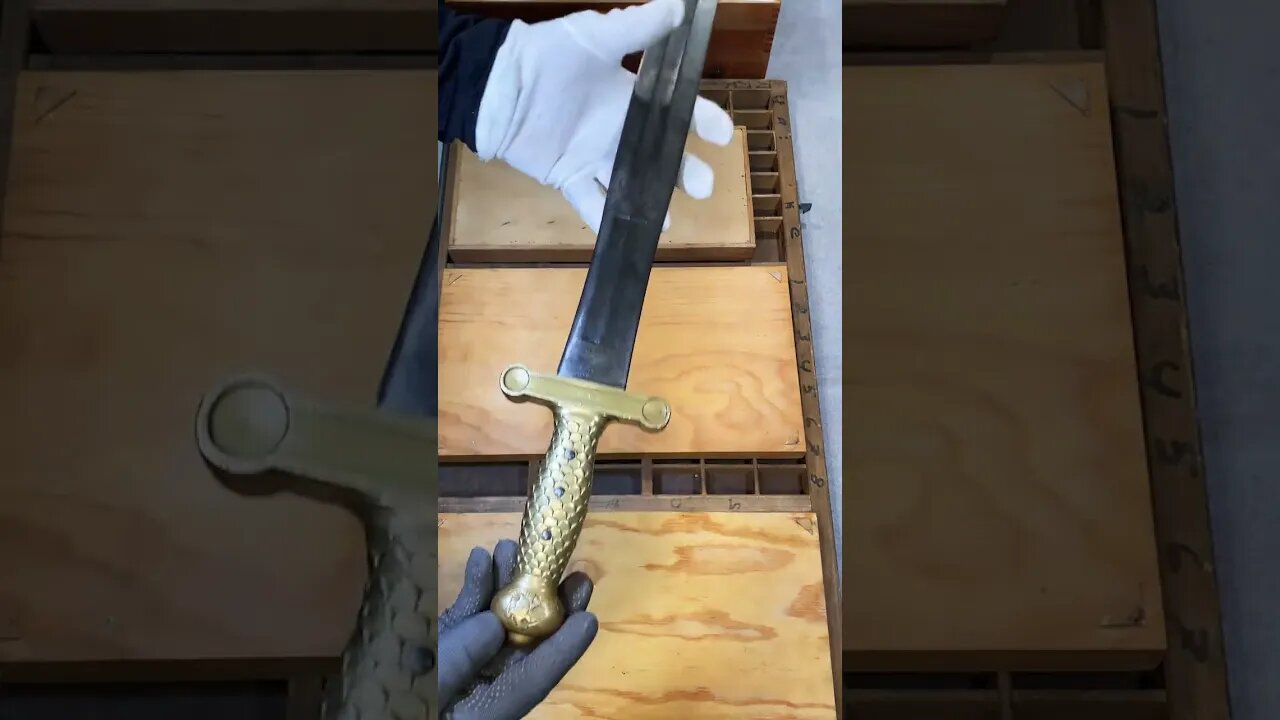Premium Only Content

Artillery Foot Sword, largest blood grove ever!
The U.S. Model 1832 foot artillery short-sword has a 6-inch (15 cm) solid brass hilt, a 4-inch (10 cm) crossguard, and a blade usually 19 inches (48 cm) in length. This model was the first sword contracted by the U.S. with the Ames Manufacturing Company of Springfield (later Chicopee), Massachusetts, with production starting in 1832. In later years, it was also imported and supplied by W.H. Horstmann & Sons of Philadelphia, Pennsylvania. As a personal side arm, it was intended for use by the regular or foot artillery regiments of the United States Army and remained in service until 1872 for use of foot artillerymen. It was the issue sword for sergeants and musicians of infantry regiments from 1832 until 1840. As most artillery regiments were trained and equipped as infantry prior to 1861 a single weapon for both types of troops made sense. It replaced the earlier Starr pattern sword used throughout the 1820s. While the design was impractical for actual combat, it is believed that artillerymen put this weapon to other uses, such as clearing brush or creating trails. It was an effective tool for cutting paths through the Florida swamps during the Second Seminole War, which occurred during the time it was issued to infantry sergeants, drummers and fifers. This is somewhat corroborated by the French nickname for their version of the sword, coupe choux (cabbage cutter). The last Ames contract for this sword was completed in 1862, although as a stock item it continued to be listed in company catalogs for decades afterwards.
The design was based on the French foot artillery short sword of 1816, which with minor changes was basically repeated in 1831. The French model was largely inspired by the Roman gladius, the standard sword of the Roman legionaries.
-
 0:59
0:59
Doggorunning
1 year agoHohem M6 is a YouTuber MUST HAVE!
37 -
 59:21
59:21
Adam Does Movies
10 hours ago $2.26 earnedMore Reboots + A Good Netflix Movie + Disney Live-Action Rant - LIVE
48.5K1 -
 36:28
36:28
TheTapeLibrary
19 hours ago $11.54 earnedThe Disturbing True Horror of the Hexham Heads
74K7 -
 6:08:00
6:08:00
JdaDelete
1 day ago $6.72 earnedHalo MCC with the Rumble Spartans 💥
52.8K7 -
 3:52:22
3:52:22
Edge of Wonder
13 hours agoChristmas Mandela Effects, UFO Drone Updates & Holiday Government Shake-Ups
45.6K15 -
 1:37:36
1:37:36
Mally_Mouse
12 hours agoLet's Play!! -- Friends Friday!
48.3K1 -
 57:45
57:45
LFA TV
1 day agoObama’s Fake World Comes Crashing Down | Trumpet Daily 12.20.24 7PM EST
44.1K22 -
 1:27:17
1:27:17
2 MIKES LIVE
11 hours ago2 MIKES LIVE #158 Government Shutdown Looms and Games!
37.5K10 -
 1:07:34
1:07:34
The Big Mig™
15 hours agoVeteran, Patriot, Leader, Author Allen West joins The Big Mig Show
33.7K8 -
 1:06:47
1:06:47
The Amber May Show
1 day ago $1.42 earnedBloated CR Failed | What Did The View Say Now? | Who Kept Their Job At ABC| Isaac Hayes
20.3K4